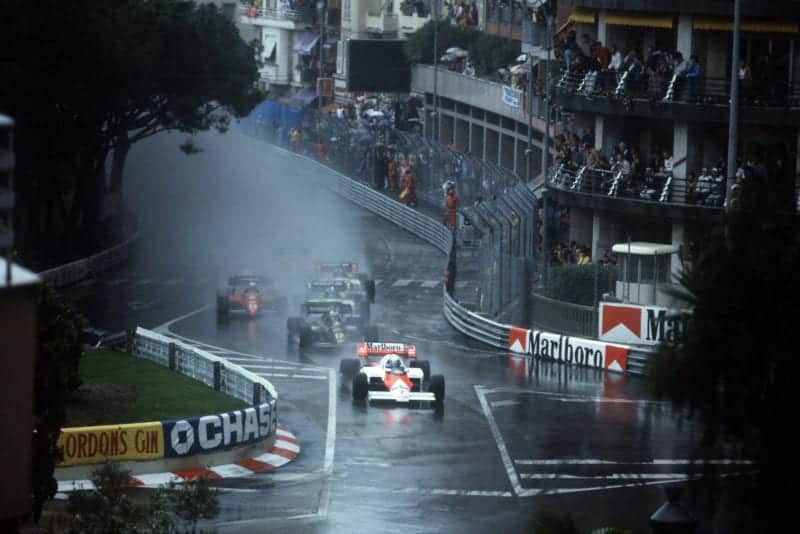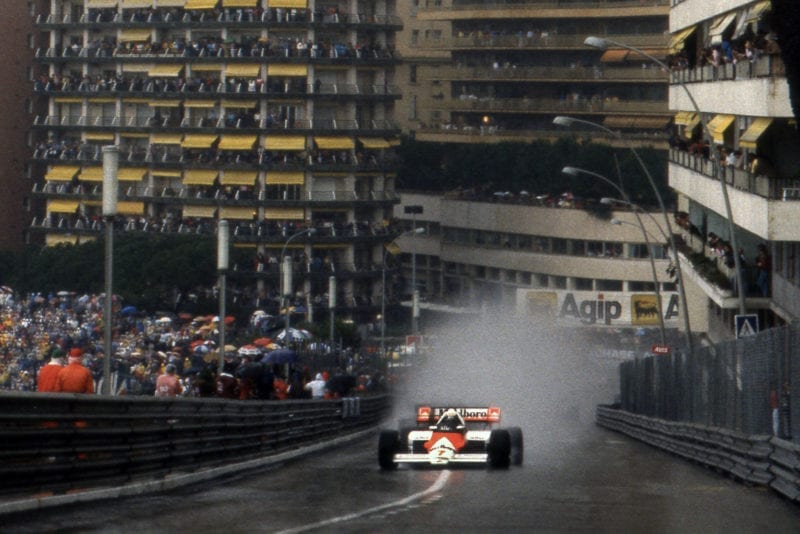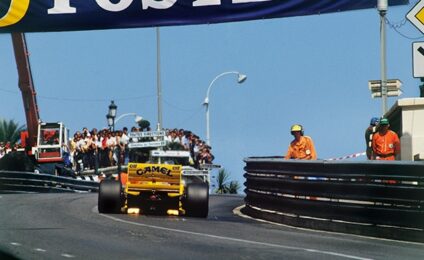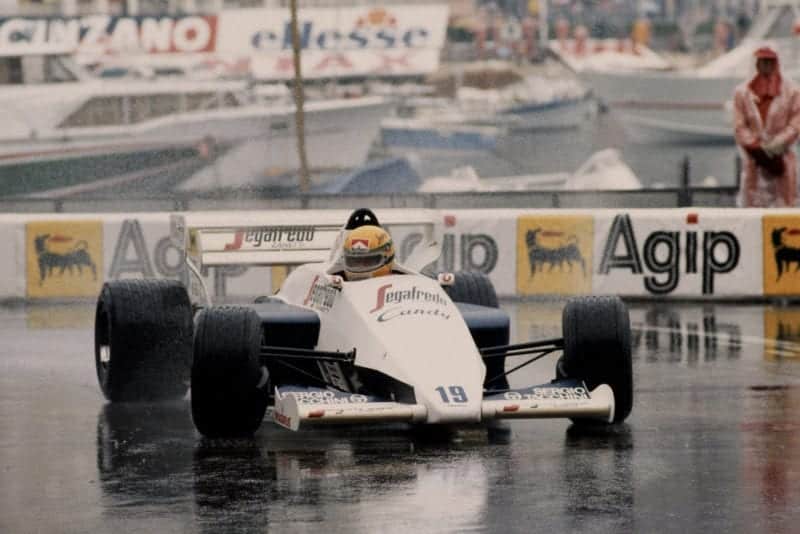It was already becoming the kind of performance we would soon get used to from Senna, the Brazilian peerless in the rain. Being so early in his F1 career however, it was a new experience for the watching F1 world.
With the rain coming down harder than ever, the track surface was not looking too dissimilar from that of the harbour just a few metres away. Front wings resembled ships’ bows as the cars ploughed through standing water.
So bad were the conditions that BBC commentators Murray Walker and James Hunt repeatedly lost their television feed, resorting to calling cars’ positions as they passed the press box.
As well as the waves that Senna was making, fellow newcomer Stefan Bellof was impressing too. Driving an underpowered Tyrrell, he had risen from last at the start to 10th in just three laps.
What could stop the supposedly best driver in the best car? A young Brazilian in a Toleman, apparently
Whilst the young guns showed the way, more experienced heads lost their cool. Both Riccardo Patrese and Michele Alboreto spun off whilst Brabham stand-in Corrado Fabi also lost it just before the tunnel, stalling his car.
As Mansell was to prove so often in his career, his driving style only had one setting: flat out. Four laps after passing Prost, he was already over 7 seconds ahead.
However, his unrelenting style eventually proved to be his undoing – on lap 16, one of his rear tyres lost traction as it touched a painted road marking, sending his Lotus spinning into the barriers and out of the race.
After Mansell’s exit, it seemed it would be plain-sailing for Prost in his McLaren. Now back in the lead, the Frenchman had a 32.6sec lead over Niki Lauda.






